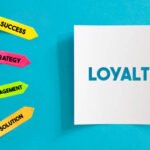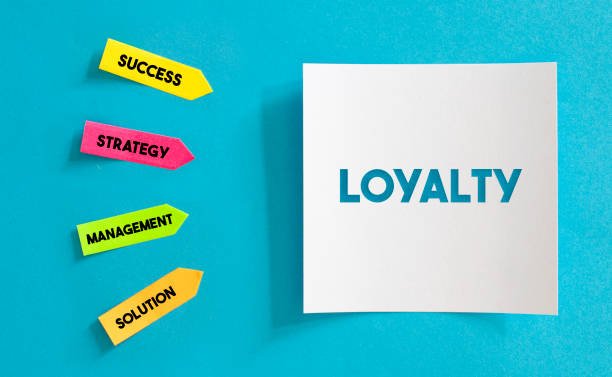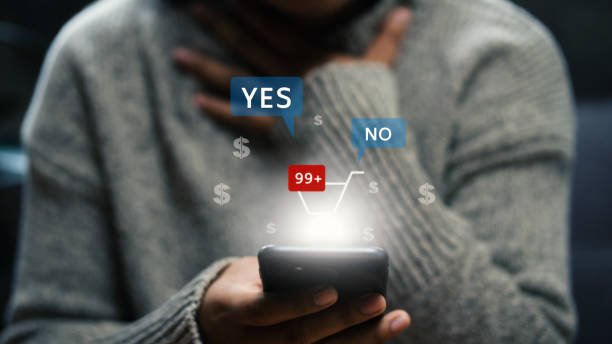In the world of digital marketing, two dominant communication styles fight for attention:
- Pop-ups : The persistent banners that appear mid-scroll
- Push notifications : The subtle buzzes from your phone or browser
Both are designed to convert — but only one does it without annoyance.
Welcome to the battle between pop-ups and push notifications , where timing, tone, and trust define who wins the buyer’s attention.
In this guide, we’ll explore:
- How pop-ups and push notifications shape user experience
- Why one can build loyalty — and the other can destroy it
- Real-world examples from high-converting Shopify stores
- And what psychology says about how people respond to interruption
Let’s dive into Pop-Ups vs. Push: Which Communication Style Boosts Sales?
The Attention Economy: Interrupt or Invite?
Digital buyers today face more interruptions than ever.
According to Baymard Institute , 90% of users find pop-ups annoying — especially when they appear before reading even begins.
But here’s the twist:
Not all pop-ups are intrusive.
Not all push notifications are effective.
The real question isn’t whether to use them — it’s how to use them without pushing people away .
Because in modern commerce…
Respect sells better than pressure.
Pop-Ups: The Good, the Bad, and the Overused
Pop-ups are visual interruptions — often appearing as:
- Email capture forms
- Exit-intent offers
- Limited-time discounts
- “Wait! Don’t leave!” prompts
They work — sometimes too well.
📉 Key Insight: Pop-Ups Convert Fast — But Cost Trust
According to research published in Journal of Consumer Research , while pop-ups do increase short-term conversion (by up to 300% in some cases), they also:
- Increase bounce rates
- Lower brand perception
- Cause frustration if overused
- Lead to ad blindness after repeated exposure
Which means:
Pop-ups win clicks — but often lose connection.
Push Notifications: Silent Seduction in Mobile Marketing
Unlike their louder sibling, pop-ups, push notifications arrive quietly — often after opt-in.
They appear as:
- Browser alerts
- App badges
- SMS-style nudges
- Personalized reminders
And unlike pop-ups, they don’t interrupt browsing — they follow it.
Psychological Insight: Anticipation Beats Interruption
Studies from Social Psychological and Personality Science show that people respond more positively to messages that feel anticipated rather than forced .
That’s why push notifications — when timed right — can feel like personalization.
And not just promotion.
Head-to-Head: Pop-Ups vs. Push Notifications
Here’s how these two strategies compare across key performance indicators.
| Feature | Pop-Ups | Push Notifications |
|---|---|---|
| Attention Grabbing Power | High – immediate visibility | Medium – requires opt-in |
| Conversion Rate (CTR) | 2–5% average | 4–10% average |
| User Experience Impact | Negative if overused | Neutral to positive if relevant |
| Opt-In Requirement | No – but can be blocked | Yes – requires explicit permission |
| Mobile Friendliness | Often disruptive | Built for mobile by design |
| Behavioral Targeting Ability | Limited to site behavior | Can track app usage, time, and engagement |
| Brand Perception Risk | High – seen as aggressive | Low – feels less intrusive |
This data shows that while pop-ups still have value…
Push notifications offer a smarter, more sustainable path to sales growth — especially in mobile-first shopping.
When Pop-Ups Still Win
Despite their bad reputation, pop-ups still serve a purpose — especially in early-stage traffic.
Here’s when they perform best.
1. At Checkout: Last-Minute Reminders Work
Exit-intent pop-ups — those that appear when someone moves to close the tab — can reduce cart abandonment by up to 30% .
Example: “Still thinking about it? Here’s an extra 10% off.”
“Wait! Don’t leave yet!”
One invites reflection.
The other demands action.
And emotional invitation beats urgency every time .
2. For First-Time Visitors: They Build Immediate Awareness
If you’re targeting new audiences, pop-ups help establish:
- Brand voice
- Core offers
- Value propositions
Before visitors even scroll.
So for cold traffic — especially paid campaigns — pop-ups still matter.
But only if they match tone, timing, and relevance .
3. With Visual Appeal: Less Text, More Emotion
Top-performing pop-ups aren’t walls of copy — they’re visual cues with emotional resonance.
Example:
“Get 20% Off — Sign Up Now!”
A minimalist image of the product + “We saved this for you.”
One feels transactional.
The other feels personal.
And personal always converts better.
4. During Flash Sales: Urgency Works Visually
Limited-time offers need limited distractions — and a bold visual cue can do the trick.
Best practice:
- Use countdown timers
- Show scarcity clearly
- Keep text minimal
- Make the offer feel exclusive
Because when done right, a single pop-up can turn hesitation into action.
5. For Emotional Offers: Warmth Beats Pressure
Instead of shouting at users with “Don’t miss out,” try softer lines like: “You seem like someone who’d love this.”
“Would you like us to remind you later?”
These lines invite — not interrupt.
And sometimes, invitation works harder than insistence.
When Push Notifications Outperform
Push notifications may not grab attention instantly — but they earn it slowly.
Here’s where they shine.
1. In Post-Purchase Retention
After a customer buys something, push notifications can:
- Confirm order status
- Suggest related products
- Offer referral bonuses
- Send post-sale care tips
This keeps the relationship alive — and increases customer lifetime value (LTV) .
Because real retention doesn’t come from ads — it comes from presence.
2. For Cart Abandonment Recovery
Instead of showing a pop-up during checkout…
Send a gentle push message afterward: “Your cart is waiting — want a reminder?”
“Still interested in [Product]?”
This builds trust after hesitation — not panic during decision-making.
3. During Seasonal Promotions
Push notifications excel at sending timely updates based on user behavior.
Examples:
- “We’re back in stock — just for you.”
- “Your favorite item drops again tomorrow.”
- “Just unlocked a special offer — because you’ve been watching.”
These feel personalized — not pushy.
Because smart marketing doesn’t shout. It whispers.
4. In App-Based Shopping Experiences
eCommerce apps like Amazon , Wish , and Shein rely heavily on push notifications to drive re-engagement.
Why? Because once opted in — users expect updates.
And when those updates feel relevant , not random…
They convert.
5. For Behavior-Based Reengagement
Push notifications can be triggered by:
- Browsing history
- Search patterns
- Time spent on pages
- Past purchase behavior
This makes them ideal for:
- Predictive selling
- Smart retargeting
- Subscription renewals
- Loyalty program reminders
Because the best persuasion isn’t loud — it’s learned.
Real-Life Examples: When Each Strategy Worked — and When It Backfired
Let’s look at actual cases where brands won — or lost — through each method.
The Pop-Up That Cut Bounce Rates in Half
A beauty brand used a well-timed exit-intent pop-up :
“Still deciding? We’ll match your energy — no rush.”
Result:
- 28% decrease in bounce rate
- 17% increase in sign-ups
- Improved brand sentiment
💡 Why It Worked: Because it matched emotion — not just urgency.
The Store That Lost Customers With Too Many Pop-Ups
An accessories brand used five pop-ups per session — including:
- Welcome offer
- Mid-page discount
- Bottom-of-page bundle
- Exit-intent upsell
- Post-exit retargeting
Result:
- Increased bounce
- Declined return visits
- Negative feedback:“Felt like I was being chased by ads.”
💡 Why It Failed: Because too many interruptions create distrust — not interest.
The Brand That Mastered Push Without Annoying
A skincare brand used behavior-based push notifications :
- Sent reminders only after users viewed a product three times
- Used warm language:“Still curious? We’ll keep it ready for you.”
- Never forced urgency — just offered relevance
Result:
- 35% higher click-through
- 22% increased repeat purchases
💡 Why It Worked: Because they treated users like people — not targets
How to Choose Between Pop-Ups and Push
Want to maximize conversions — without damaging brand trust?
Here’s how to decide which tool to use — and when.
1. Use Pop-Ups for Critical Moments
Pop-ups work best when:
- You have one shot at capturing attention
- Your audience hasn’t engaged deeply yet
- You need to build awareness fast
Use them for:
- First-time visitor offers
- Exit-intent recovery
- High-value product launches
But limit yourself to one per visit — unless you’re offering real value.
2. Use Push for Long-Term Engagement
Push notifications thrive when:
- Users already know your brand
- You want to build habitual buying behavior
- You’re optimizing for mobile UX
Use them for:
- Abandoned cart recovery
- Exclusive drop alerts
- Membership perks
- Personalized product suggestions
Because real sales happen not just at first contact — but at second, third, and fourth.
3. Combine Both Strategically
Smart brands use both tools — but never together .
Example:
- Use a single pop-up to ask for email or app download
- Then switch to push notifications for ongoing engagement
This ensures you don’t overwhelm — but still stay top of mind.
4. Match Tone With Audience Energy
Pop-ups should reflect your brand personality:
- If playful → keep it light
- If refined → keep it elegant
- If casual → keep it friendly
Same goes for push:
- Don’t sound robotic
- Avoid fear-based language (“Last chance!”)
- Favor warmth over urgency
Because real persuasion doesn’t scream — it suggests.
5. Track What Actually Converts
Use tools like:
- Google Analytics
- Klaviyo
- Omnisend
- Shopify Magic
To see:
- Which pop-ups lead to real sales
- Which push notifications get ignored
- What types of offers convert best
Then optimize accordingly.
Because the goal isn’t just to reach people — it’s to reach the right ones — the right way .
Frequently Asked Questions (FAQ)
Q: Do pop-ups still convert well?
A: Yes — but only if they’re light, timely, and emotionally aware .
Q: Should I use both pop-ups and push notifications?
A: Absolutely — but segment wisely. One interrupts; the other follows up.
Q: Are push notifications better for mobile shoppers?
A: Definitely — especially when paired with app integration.
Q: Can push replace email marketing?
A: Not fully — but it enhances reach, especially among younger audiences.
Q: What if users block my pop-up?
A: Switch to slide-ins or floating bars — less aggressive, equally effective.
Final Thoughts
Conversions don’t come from volume — they come from emotional alignment .
Because in digital commerce…
The most powerful message isn’t the loudest — it’s the one that lands gently.
So next time you’re building your funnel…
Ask yourself:
“Do I want to interrupt — or engage?”
Because the difference defines whether your brand gets clicked — or closed.
And sometimes, the best way to sell…
Isn’t through interruption at all.
It’s through invitation.










